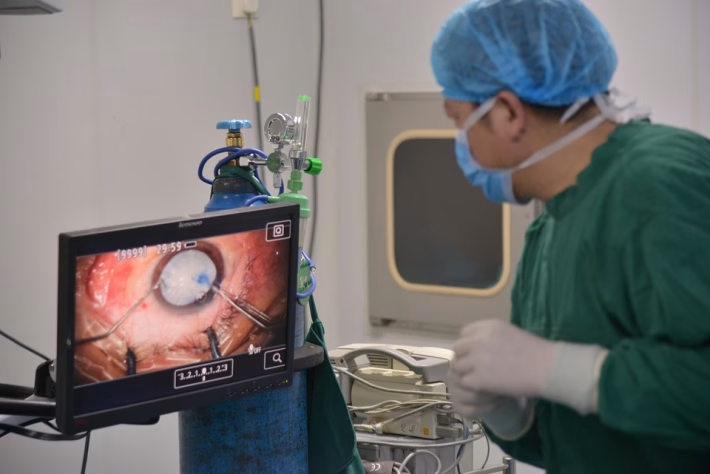AI-Powered Drug Discovery: Accelerating Breakthroughs in 2025

In 2025, the landscape of AI automation is undergoing a seismic shift, primarily driven by advancements in reinforcement learning (RL). This sophisticated branch of machine learning enables algorithms to learn from actions and experiences, simulating a trial-and-error learning method akin to human problem-solving. Major tech giants, including OpenAI and Google AI, are unlocking new capabilities that cater to diverse sectors, fundamentally reshaping how businesses operate.
The Core Development: Reinforcement Learning at Scale
Recent breakthroughs in RL have facilitated the development of versatile AI tools that can autonomously adapt to various tasks. For instance, Google DeepMind’s latest RL models are not only excelling in traditional domains like gaming but are also making significant strides in complex real-world scenarios, including healthcare diagnostics and energy management. These new models utilize fewer data samples while achieving superior performance levels, marking a significant leap in efficiency.
Moreover, platforms like OpenAI’s Reinforcement Learning-as-a-Service (RLaaS) have emerged, allowing businesses to integrate this cutting-edge technology into their existing systems without requiring extensive machine learning expertise.
Key Features of New RL Tools:
- Low Sample Efficiency: Learning quickly from limited data.
- Interactivity: Real-time adjustments based on environmental feedback.
- Multi-Modal Capabilities: Ability to handle various types of tasks, from data analysis to physical automation.
Practical Applications: Real-World Use Cases
The promise of reinforcement learning is manifesting in several industry applications:
-
Healthcare: Machine learning models are now trained to optimize treatment plans based on patient responses, enhancing outcomes by adjusting therapies dynamically.
-
Manufacturing: Automated systems equipped with RL can optimize supply chain logistics, reducing waste and increasing efficiency through adaptive strategies.
- Finance: RL algorithms are being utilized in algorithmic trading to dynamically adjust investment strategies based on real-time market data and existing portfolio performance.
Specifically, a startup named “RLAI Corp” has leveraged RL to optimize customer service chats, resulting in a 30% reduction in response time while enhancing customer satisfaction metrics.
Benefits & Challenges: Weighing the Pros and Cons
Advantages:
- Enhanced Decision-Making: RL algorithms improve over time, leading to better long-term decisions based on historical performance.
- Resource Efficiency: Automated systems can save costs by reducing the resources needed for training and operations.
Limitations:
- Data Intensity: While RL can operate efficiently with less data, the initial setup still often requires large datasets, raising privacy concerns.
- Complexity in Implementation: Businesses may face challenges in integrating RL into existing systems without specialized knowledge.
Ethical Considerations:
As companies increasingly rely on RL, concerns regarding transparency and accountability in AI decision-making are surfacing. How do we ensure that decisions made by RL systems are ethical, particularly in sensitive sectors like healthcare?
Industry/Market Impact: Catalyzing AI Adoption
The rise of reinforcement learning is a key driver in accelerating AI adoption across industries. According to a recent report from Gartner, by 2026, up to 60% of businesses will incorporate RL techniques to enhance automation and decision-making. Traditional sectors, such as manufacturing and logistics, are leading the charge, but burgeoning industries like fintech and telehealth are quickly catching up.
These advancements not only improve operational efficacy but also foster healthier competition, pushing businesses to innovate continuously. Companies adopting advanced RL solutions report increased adaptability and improved customer experience, creating a ripple effect across the market.
Expert Insights: Voices in the Field
According to Dr. Amelia Chen, a leading researcher at Stanford AI Lab, “Reinforcement learning is reshaping our understanding of machine autonomy. As these models become more self-sufficient, they will redefine industries from hospitality to energy management.”
Similarly, Andrew Ng, co-founder of Google Brain, emphasizes, “The era of intuitive, adaptive systems is here—reinforcement learning is leading the way, allowing AI to not only react but to predict and innovate.”
What’s Next: Future Predictions
Looking ahead, the trajectory of reinforcement learning suggests several exciting developments:
- Integration with Other AI Disciplines: Expect more convergence with natural language processing and computer vision, making multifaceted AI applications commonplace.
- Improved Robustness: Future RL models will likely feature enhanced capabilities that allow for better handling of unpredictable, real-world scenarios.
- Regulatory Frameworks: As RL continues to mature, a regulatory landscape will likely emerge to provide guidelines on ethical practices, data usage, and accountability.
SEO FAQs
What are the best AI tools in 2025?
- With advancements in reinforcement learning, tools like OpenAI’s RLaaS and Google’s DeepMind offer unparalleled capability for various tasks.
How is AI changing business automation?
- AI, especially through RL, is enabling businesses to optimize processes, enhance decision-making, and reduce operational costs.
What’s new with ChatGPT and OpenAI in 2025?
- OpenAI is continually evolving its models, incorporating RL for enhanced context understanding, personalized interactions, and real-time adaptability.
Which industries benefit most from AI automation?
- Sectors such as healthcare, manufacturing, and finance are at the forefront, leveraging RL to drive efficiency and innovation.
The integration of reinforcement learning into everyday applications is a testament to the potential of AI and automation as transformative forces in our world. As we move into the next decade, it will redefine not just how work is done, but also how we think about artificial intelligence’s role in society.
🚀 Try Ancoia for FREE today and experience the power of business automation!
🔗 Sign up now and get a 7-day free trial



